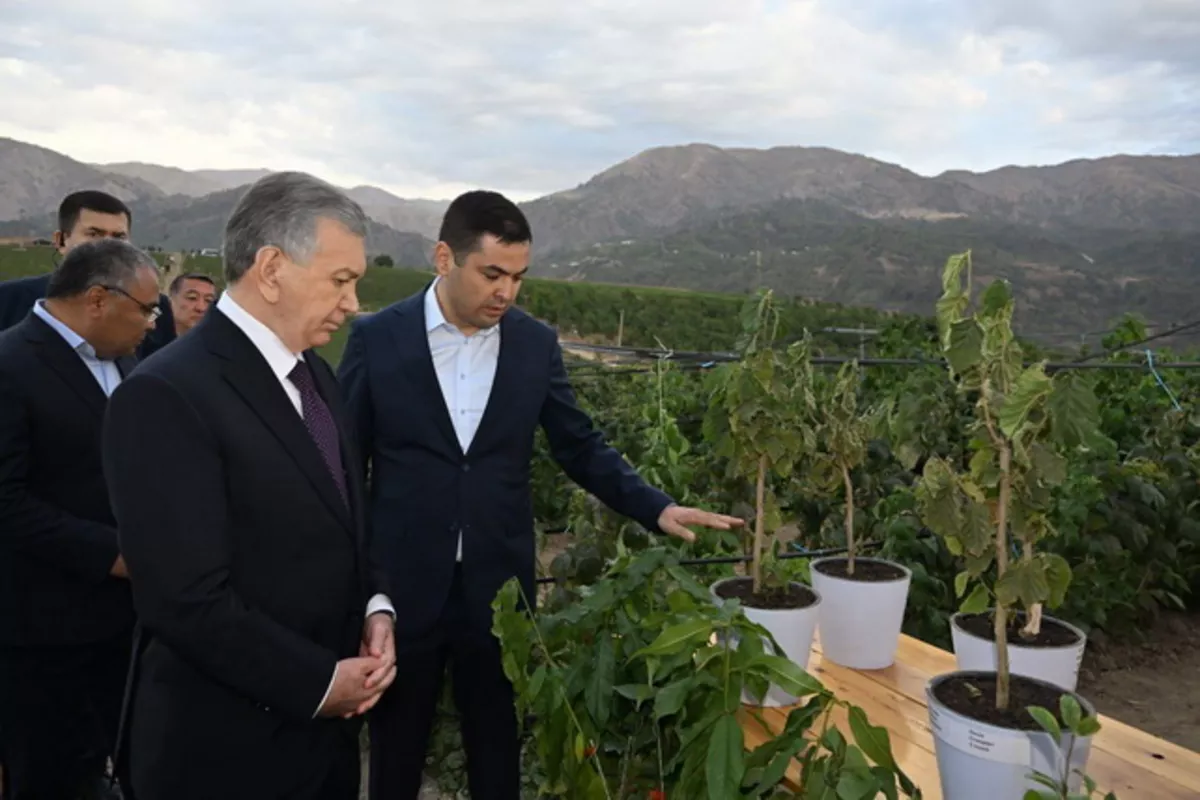
photo: UzDaily.uz
Uzbek President Shavkat Mirziyoyev has visited an agro-industrial orchard under development in the Chimyön neighborhood of Bostanlyk District, where a large-scale project is underway to boost horticulture and expand the processing of agricultural products.
Bostanlyk, known for its abundant water resources and fertile soil, provides ideal conditions for both agricultural development and tourism, The Caspian Post reports via Uzbek media.
The project covers 3,000 hectares in Chimyön and will cultivate raspberries, blackcurrants, strawberries, and hazelnuts.
The initiative, with a total investment exceeding $60 million, includes orchard planting, construction of processing facilities, and large storage units. Currently, 50 hectares have been planted with export-grade raspberry and strawberry varieties, complete with modern drip irrigation systems. Estimated yields from one hectare are up to 400 million soms ($32,310) for raspberries and 500 million soms ($40,250) for strawberries.
Once fully operational, the orchard’s annual production is expected to reach 24,000 tons, with a significant portion earmarked for export. The project is also set to create over 12,000 jobs, providing local residents with stable employment and reducing the need to seek work in other regions.
President Mirziyoyev underscored the importance of developing processing capabilities and adopting modern agricultural practices-from crop selection and soil preparation to harvesting and sorting-to ensure high-quality output and strengthen Uzbekistan’s competitiveness in international markets.
He also instructed authorities to assess other foothill and pasture areas for the creation of similar agro-parks.
“In this orchard, you can see the labor and care invested in the land. The main outcome is income and benefit for the people. Returns here are many times higher than from traditional crops. It is therefore crucial to train more people in berry cultivation and enable them to earn a decent income,” the president said.
Share on social media